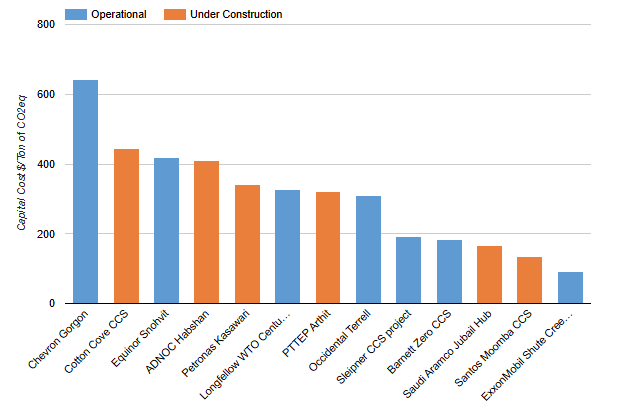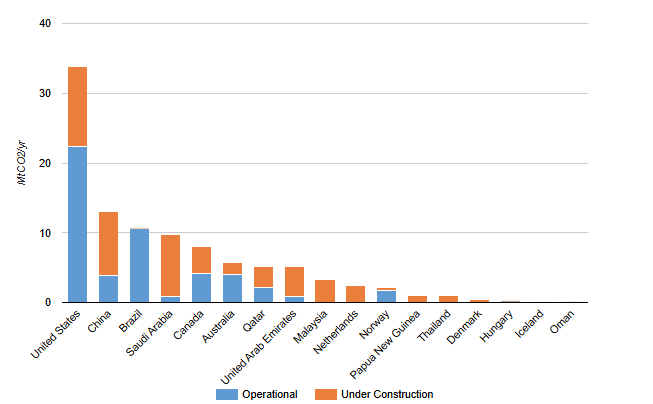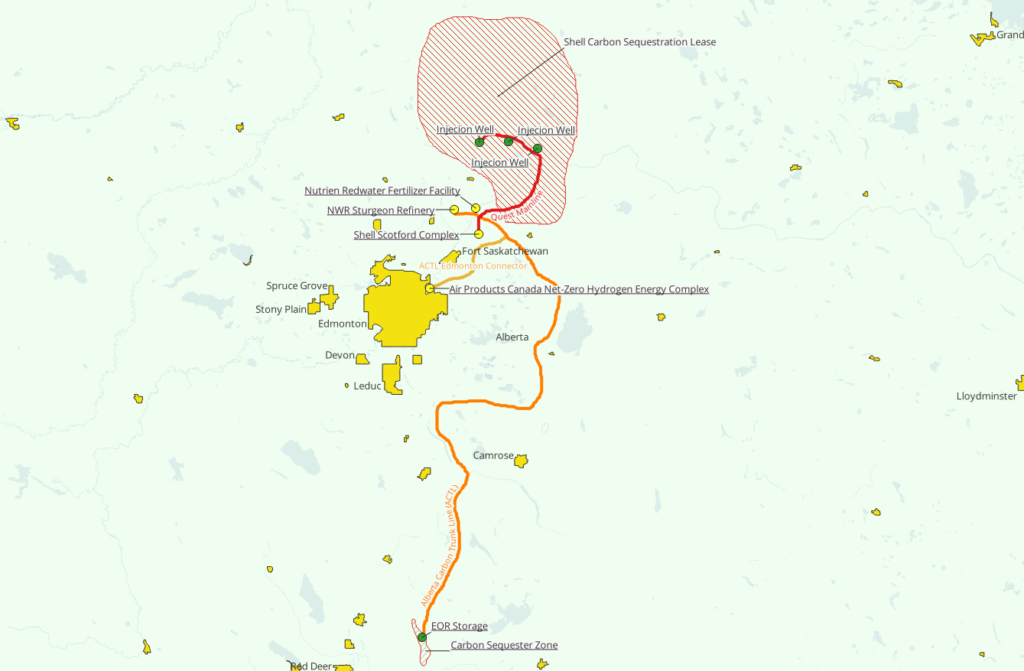Carbon Capture and Storage Capital Cost

October 23, 2025
Carbon Capture and Storage (CCS) has become a central component of decarbonization strategies in the natural gas industry. Incorrys review of more CCS facilities related to natural gas production and processing — ranging from early projects such as Occidental’s Terrell plant (1972) to mega-scale facilities like Saudi Aramco’s Jubail Hub (scheduled for 2027).
Carbon Capture and Storage Capacity Worldwide

October 21, 2025
Carbon Capture & Storage technology captures CO2 from industrial sources like power plants, transports it, and permanently stores it deep underground in geological formations such as saline aquifers or depleted oil and gas reservoirs for enhanced oil recovery. As of the end of 2024, global operational CCS capacity is 51 million metric tons of carbon dioxide/year (MtCO₂/yr), with an additional 50+ MtCO₂/yr under construction over the 2025-2027 timeframe.
Carbon Capture and Storage Projects in Alberta

October 21, 2025
In Alberta, several carbon capture and storage projects are already operating while others are moving through planning stages. The Alberta Carbon Trunk Line (ACTL), commissioned in 2020, is one of the world’s largest CO₂ transportation systems, with a design capacity of 14.6 MtCO₂/year . Its launch marked a major step in Canada’s efforts to scale carbon capture, utilization, and storage by enabling large‐volume industrial emissions to be permanently sequestered. Currently installed Carbon Capture capacity utilizing ACTL is much lower.

